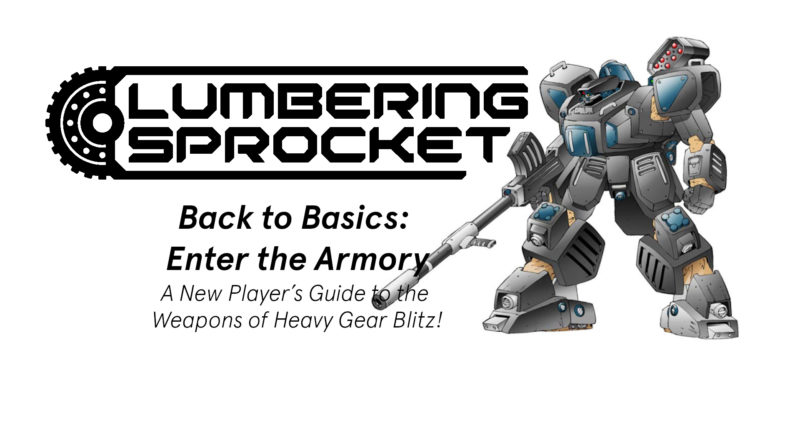Enter the Armory
A New Player’s Guide to the Weapons of Heavy Gear Blitz!
by Red Rick Dias (with images from Heavy Gear rulebooks)
(Updated May 5, 2022): This article now includes the rules changes made in the May 2022 version of Heavy Gear Blitz! 3.1.
One of the most enjoyable things about Heavy Gear Blitz! is its big list of weapons to play with, as each helps define a model’s role on the battlefield. At the same time, this can be a little daunting for new players to learn. That is what this guide is for; we’ll go through each weapon and figure out what they do on the table. This will be a hands-on experience, as it’s a lot more fun to learn by setting up a ‘firing range’ using a few models of their choice and rolling some dice!
It’s fine, and expected, if it takes multiple sessions to learn everything. One good way to approach this is to pick out a few weapons, take them to the ‘range’, and test them out on various targets. Using proxies is totally fine; this is meant to help players figure out what they like before spending money on models and weapon bits. Once you have finished a session at the range, take a break before picking out a few more weapons to test. After a few of these sessions, each weapon should make a lot more sense.
Let’s get started, using the three fundamental weapons covering most of HGB’s core mechanics: The Autocannon, Rocket Pack, and Vibroblade. Understanding these three is essential, so please use them for the first training session.
The Three Fundamental Weapons
Autocannon (AC)
Range 6-18/36, Damage 6/7/8
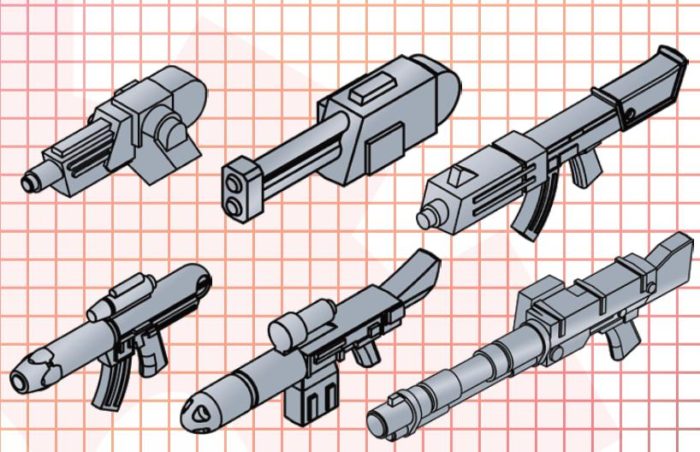
Among the most common weapons in the game, the Autocannon is mainly used to fight gears and light vehicles. It does purely average damage (6/7/8 for Light/Medium/Heavy versions), with average range (6-18 optimal, 36 maximum). What makes the Autocannon useful is its traits, which give it better accuracy. The first trait set is Burst:1 and Split, with Burst:1 providing an extra 1d6 on your attack roll; your attack’s result die has a better chance of beating the opponent’s defense result die because of this. Split lets you attack an additional target, albeit with a -1d6 penalty (effectively canceling out the Burst:1); it can be useful if your foes are clustered together.
This weapon also introduces ‘(OR)’ rules, which allow you to pick from two different sets of traits every time you attack, so you may choose the one that best fits your needs. Autocannons use ‘OR’ to trade both Burst:1 and Split for just Precise (which adds +1 to the attack result die if the attack is made in its optimal range, 6-18 inches in the Autocannon’s case). For models with 4+ Gunnery or worse, such as many ‘trooper’ gears like the Hunter, Precise tends to be slightly more accurate than Burst:1.
(Note: For those curious about the math for choosing Burst or Precise, this article on dice and probability is a great read once you are more familiar with the game.)
Thus, the Autocannon is a reasonable choice for most foes you will encounter. Their only true weakness is against heavy armor; any target with an Armor stat 1 or 2 higher than your Autocannon’s listed damage will be hard to hurt, and Armor values that are 3 or more above your Autocannon’s damage will probably outright ignore the attack.
Rocket Pack (RP)
Range 6-18/36, Damage 7/8/9
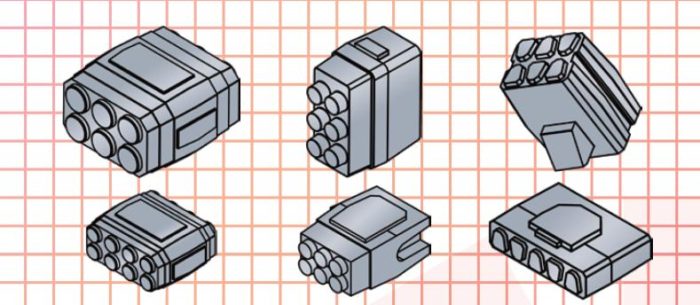
Fortunately, most Autocannon-equipped models also have another weapon meant to overcome this problem: a Rocket Pack!
This weapon has the same range as an Autocannon, but otherwise works very differently. Rocket Packs do more damage (7/8/9 for Light/Medium/Heavy rocket packs), and have completely different traits. AoE:3 (‘Area Effect: 3 inches’) gives it a limited ability to do area attacks, striking enemies that are tightly packed together. However, the real prize is AP:1 (Armor Piercing:1). On a successful hit, an AP weapon checks two things: The first is how much damage it would do on a normal damage roll, and the second is the Margin of Success on the attack roll.
At this point, the attacker makes a choice: They may use the normal damage roll if it is better, or use the AP trait to apply damage directly to the target’s Hull/Structure at 1 damage per Margin of Success (‘MoS’), up to a limit specified by the number after the AP trait. This is a minimum of 1 damage, even on a MoS of 0. For example, a MoS of 3 on an AP:1 weapon will do 1 damage directly to Hull/Structure; a MoS of 4 on an AP:2 weapon would do 2 damage, a MoS of 5 on an AP:5 damage would do 5 damage, and so on. A MoS of 0, to repeat this important point, would still do minimum 1 damage if you use the weapon’s AP trait.
This makes Rocket Packs both a very basic artillery weapon, and a common answer to heavy armor. 1 damage might not be much, but it’s still better than doing literally nothing. In other words: The Autocannon is your weapon for fighting faster targets, while the Rocket Pack is best against slower or more heavily armored foes. Rocket Packs are also capable of Indirect attacks, but this topic is best covered in a separate guide written by Than.
Vibroblade (VB)
Damage 7/8/9
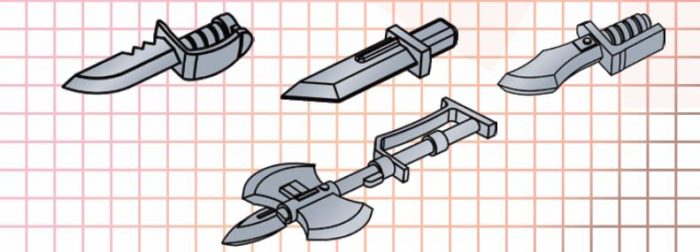
Many weapons list an optimal range like 3-9, or 6-18, or so on; something where the first number is higher than 0. This is where melee weapons like the Vibroblade become relevant, as you can move adjacent to the target and make a melee attack without the ‘outside optimal range’ penalties a ranged weapon might incur.
Vibroblades have the AP trait, at 2/3/4 for light/medium/heavy Vibroblades, respectively. This is substantially higher than the rocket pack, and two good hits from even a light Vibroblade can cripple all but the heaviest tanks and striders. This makes Vibroblade attacks a high-risk tactic, but also a very rewarding one, since even the lightest gear can be a major threat in close combat.
One thing to note is that AP values of 2 or more need a higher Margin of Success to get their full benefit. This is somewhat hard to do when rolling a base 2d6 attack against an opponent’s base 2d6 defense, but there are ways to improve it. One good method is to attack the opponent’s rear arc, which will grant bonus dice to the attack. Likewise, doing melee attacks against a target that has no melee weapon (such as many tanks) will grant a bonus.
This covers the three fundamental weapons, which will make learning about every other weapon much faster; we can simply compare them to one of these three to see where their strengths lie.
Next, we will cover melee weapons; they are a fairly small group, and easy to learn all at the same time.
Melee Weapons
All of these use the same general rules a Vibroblade does, tweaking both the damage and traits to make them better at different jobs.

Combat Weapon (CW)
Damage 7/8/9
Featuring the same damage as a Vibroblade, Combat Weapons trade the AP trait for Demo:2. When a CW hits a building, fortification, or terrain (not gears, tanks, infantry, and other things capable of moving), check whether the normal damage roll would do more than the listed Demo value. If so, you may use the normal damage result. Otherwise, apply the full Demo value to the target’s hull/structure. This is done even on a MoS of zero (0); the Demo trait is specifically meant to let players wreck buildings and similar targets on any hit. Combat Weapons are thus worse at fighting most targets, but specifically better at damaging fortifications and buildings.
Note that some models (not all, but some) carrying a CW have bonus traits for it. Look closely at the weapons list for a CW-equipped model, they may have something that makes the CW a bit better.
Infantry Combat Weapon (ICW)
Damage 4/5/6
Typically issued to infantry and cavalry models, the ICW is weaker than an equivalent melee weapon on a gear or strider. Their major benefit is the AI (Anti-Infantry) trait, which grants +1d6 on attack rolls against both infantry and cavalry, plus bypasses the 2 damage cap that infantry normally have when being hit. Take careful note that unlike normal Combat Weapons, the infantry scale ones lack Demo; the ICW is mostly for fighting infantry and other lightly armored targets. Special note: The ‘2 damage cap for infantry’ only applies to infantry; cavalry do not have this limit.
Shaped Explosives (SE)
Damage 8/9/10
These pack a high damage value, AP, and Demo traits all on the same weapon; anything hit by a SE is in for a lot of pain because you pick whichever of those three will do the most damage. They have one significant flaw, though: a Brawl:-1 (minus one) trait! This makes it very hard to actually hit anything with a Shaped Explosive since you’re losing 1d6 on the attack roll. Many players try to counteract the penalty by picking up a positive Brawl trait upgrade, or going for rear arc attacks. This makes SEs a high investment weapon, but one that can yield huge results.
Spike Gun (SG)
Damage 6/7/8
While Spike Guns do less damage than Vibroblades, they have a higher AP value (3/4/5 instead of 2/3/4). This makes them excellent anti-tank/anti-strider weapons, and a positive Brawl trait can also help them get the higher Margin of Success needed to get full value out of AP. This makes spike guns a very specialized sidegrade to Vibroblades; they are worse against nearly every other type of opponent, but much better against heavily armored targets as well as some buildings.
This covers all the melee weapons, so let’s move on to ranged attacks!
Ranged Weapons
Ranged weapons are the bulk of this game’s arsenal, and it will likely take more than one ‘firing range session’ to learn them. The best approach is try these in alphabetical order, as certain traits will eventually stop being mentioned in full detail once it is fair to presume the player recognizes them.
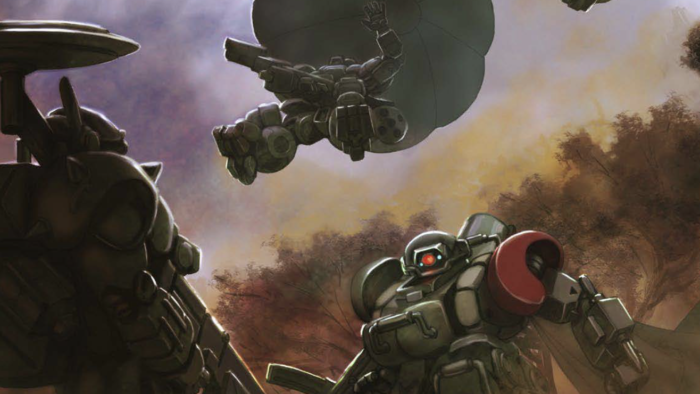
Anti-Air Missile (AAM)
Range 12-36/72, Damage 7/8/9
Despite the name, the AAM can be used against any kind of target; it simply does best against airstrike counters and elevated VTOLs due to its Flak trait (granting +2d6 on attack rolls against those targets). Its high range and above-average damage makes it a reasonable choice for attacking all but the most heavily armored targets, so feel free to target non-VTOLs with an AAM. The Guided trait gives it an accuracy bonus if an ally with the TD trait successfully forward observes for it, and this does stack with the Flak trait if both apply.
Air Burst Missile (ABM)
Range 24-48/96, Damage 6/7/8
Tremendous range, decent damage, and a huge trait list make the ABM a form of ‘light artillery’ that specializes in destroying infantry and cavalry. Take note that ABMs can only make indirect attacks. While Guided, AOE:3, and AI have been covered elsewhere, this is the first weapon with the Blast trait. Blast lets you ignore the target’s defense bonus for being in cover, so long as the Blast weapon does an indirect attack (not a direct attack) against a model the attacker or the attacker’s forward observer has line of sight to. Take note that ranged weapons with the AI trait gain all the same benefits melee AI weapons do; +1d6 on attacks against infantry and cavalry, plus ignoring the infantry damage cap.
Artillery Gun (AG)
Range 24-48/96, Damage 9/10/11
High range, massive damage, and a useful trait list makes the AG one of your ‘big gun’ options. The most typical use is to park an AG-equipped model on your side of the table and have allies forward observe for it to make up for the accuracy penalty on indirect attacks. Focus on big targets like tanks, striders, fire support gears, important buildings, and targets your forward observer can get behind.
Artillery Missile (AM)
Range 24-48/96, Damage 7/8/9
Best used to attack Agile targets with low to medium armor, the Artillery Missile is a weaker but usually less costly variant of the Artillery Gun. Trading Demo:2 for Guided and having lower damage than the AG is what pushes this weapon into being used to hunt relatively lighter, faster targets. Note that it still does enough damage to be a viable threat to most gears, and even some lighter tanks.
Anti-Personnel Grenade Launchers (APGL)
Proximity, Range 3, Damage 5/6/7
Our first example of a proximity weapon, APGLs do slightly low damage but have the Frag and AI traits to compensate. Note that proximity weapons target all models, friend and foe alike, within the listed range (3 inches in the case of APGLs). In addition to their obvious anti-infantry use, APGLs are also a good choice for finishing off lightly armored foes.
Anti-Personnel Rockets (APR)
Range 6-18/36, Damage 6/7/8
A variant of the Rocket Pack, APRs do less damage but trade AP:1 for AI. This makes them less useful against most gears and tanks, but far more effective against infantry.
Artillery Rockets (AR)
Range 12-36/72, Damage 7/8/9
Decent damage and above-average range make Artillery Rockets a decent choice for long distance fighting. Demo:2 also lets them tear up buildings and other fortifications, though bear in mind the Demo trait only works against specific target types; the AR is unlikely to damage heavily armored foes such as striders and many tanks.

Anti-Tank Missile (ATM)
Range 12-36/72, Damage 8/9/10
A single-target weapon with high damage, its AP and Guided traits make it suitable for use against tanks and striders as well as faster targets. Keep an eye out for models with ‘LA:#’ (Limited Ammo) variants of this weapon; they can be a great way to get this excellent weapon into your force for less TV than usual.
Anti-Vehicle Missile (AVM)
Range 6-18/36, Damage 5/6/7
The ‘infantry-scale’ version of the ATM, this has less range, damage, and a lower AP value. It otherwise works exactly the same, and tends to come on inexpensive models such as many cavalry units. This is one of the strongest infantry-scale weapons in the game, and is a meaningful threat to most gears.
Bomb (BB)
Range 0, Damage 8
Only available in one size, this weapon is usually equipped on airstrike counters and demo drones. Generally speaking, a model with this weapon wants to get behind a target with medium or light armor in order to do maximum damage. Despite their 0 range, this weapon uses ranged attack rolls rather than melee rolls.

Bazooka (BZ)
Range 6-12/24, Damage 7/8/9
A common anti-tank weapon for gears, bazookas have slightly low range but do good damage and have high AP values. Note the lack of a Burst trait or other way to get a higher Margin of Success; a bazooka is best used against targets with poor Piloting stats in order to use their full AP trait. Consider using them on models with high Speed to overcome the low range.
Frag Cannon (FC)
Range 3-9/18, Damage 5/6/7
A gear scale shotgun, Frag Cannons use the ‘OR’ trait to represent different ammo types. The Precise and AP trait set represents anti-armor slugs; the AP trait will work at any legal range, while the Precise bonus only applies at optimal range (3-9 inches). The other trait set is for fighting infantry, cavalry, and lightly armored gears; Frag provides +2d6 on the attack roll, which can also help soften the blow of the -1d6 non-optimal range penalty. Note that if a frag cannon attacks infantry or cavalry, the AI trait’s bonus does stack with Frag; you could get as much as +3d6 on the attack.
Frag Cannons have two major drawbacks: Low range, and somewhat low damage. These properties make them less useful against higher-end targets that combine good Piloting stats with above-average armor and speed, such as the Jaguar and other ‘strike gears’. Nonetheless, Frag Cannons are excellent against targets that are extremely fast but lightly armored, or heavily armored but very slow.
Field Gun (FG)
Range 12-24/48, Damage 9/10/11
The most versatile of the ‘big guns’, FGs have high range and damage plus the ‘Or’ trait. AOE:3 and Blast makes it a decent artillery weapon, or a high AP value can be used to punch big holes in tanks, striders, and buildings. The lack of any accuracy-boosting traits makes it hard to use against targets with good Piloting stats and/or the Agile trait, ensuring the FG is best against larger foes.
Flamer (FL)
Range 0-9/18, Damage 3/4/5
Flamers have a huge list of traits that make them excellent for fighting both infantry and heavily armored foes. The Spray trait ignores partial cover, helping Flamers hit entrenched foes while AI and Burst:1 make it even better against infantry. The Fire:X trait rolls each Fire die as a separate instance of damage, so a lucky roll causing 3 or 4 Fire damage (with Medium and Heavy Flamers, respectively) will effectively ignore the ‘2 damage to infantry’ cap. While Flamers need some luck on the dice to do well, their ability to threaten both infantry and heavy armor is a unique advantage.
Field Mortar (FM)
Range 18-36/72, Damage 8/9/10
High range, damage, Blast, and AOE:4 makes this a good artillery weapon. Though unlikely to damage the most heavily armored targets, a FM with a good forward observer is a very real threat to anything else on the table.
Grenade Launcher (GL)
Range 6-12/24, Damage 6/7/8
A compromise between the Autocannon and Rocket Pack, the GL has slightly low range in return for an excellent trait list. AOE:3, Blast, AP:1, Burst:1, plus the ability to do direct or indirect fire makes Grenade Launchers competent light artillery weapons, while still being reasonably useful against targets with good Piloting stats or heavy armor. This versatility is the key to good GL use; it is never the best solution to a problem but it is usually able to contribute something.
Guided Mortar (GM)
Range 18-36/72, Damage 7/8/9
Effectively a Field Mortar with less damage and a smaller AOE trait, the Guided Mortar gains the Guided trait that makes it more suited to fighting Agile targets if you have a TD-equipped model for forward observation.
Hand Grenades (HG)
Range 3-6/9, Damage 8/9/10
With some of the lowest range in the game, Hand Grenades are ‘artillery’ weapons only in very close quarters combat. While that is useful on maps with lots of cover, the HG also does high damage. This makes them a good choice for attacking fire support gears, which tend to have 8 or 9 armor. Note that some models with Frag Cannon variants also pick up a free set of Hand Grenades (or Panzerfausts) that other variants lack; check the model’s weapons list to see if it does, as this will make them even more versatile. If a specialized anti-armor weapon is desired, the Grenade Swap standard upgrade will trade out the Hand Grenade for a Panzerfaust.
Infantry Grenade Launcher (IGL)
Range 3-9/18, Damage 5/6/7
The ‘infantry-scale’ version of the Grenade Launcher has less range, while splitting the GL’s traits into two sets via the ‘Or’ trait. One set offers very light artillery traits, while the other is AP:1. Like the AVM, this lets infantry threaten most gears. It is common on many cavalry models, whose higher speed lets them use Infantry Grenade Launchers well.
Infantry Lasers (IL)
Range 6-18/36, Damage 3/4/5
Decent range for an infantry weapon, combined with Burst:1 and Advanced (which grants +1 to the Result die on attacks, so long as the target is in optimal range), makes these a good choice for attacking other infantry and cavalry. Their low damage makes them nearly useless against anything that isn’t infantry/cavalry, however.
Infantry Mortars (IM)
Range 12-24/48, Damage 4/5/6
High range, Blast, and the AI trait makes these a reasonable choice for attacking large groups of enemy infantry and cavalry. Their damage is high enough that they have a small chance of damaging lighter gears, too.
Infantry Rifles (IR)
Range 6-24/48, Damage 4/5/6
Decent range, the Precise trait (+1 on the result die for any attack, regardless of whether the target is in optimal range), and AI means these rifles are excellent for attacking other infantry and cavalry. They do enough damage that they can be a realistic threat to lighter gears as well.
Infantry Support Weapons (IS)
Range 6-18/36, Damage 4/5/6
Generally inferior to Infantry Rifles due to the lower range and lack of any inherent traits, IS tend to be on models costing less TV than an IR-equipped model. Some models go against this tendency, instead improving their Infantry Support Weapon with special traits. Take note that a normal IS does not have the AI trait, making this one of the few infantry-scale weapons to lack it.
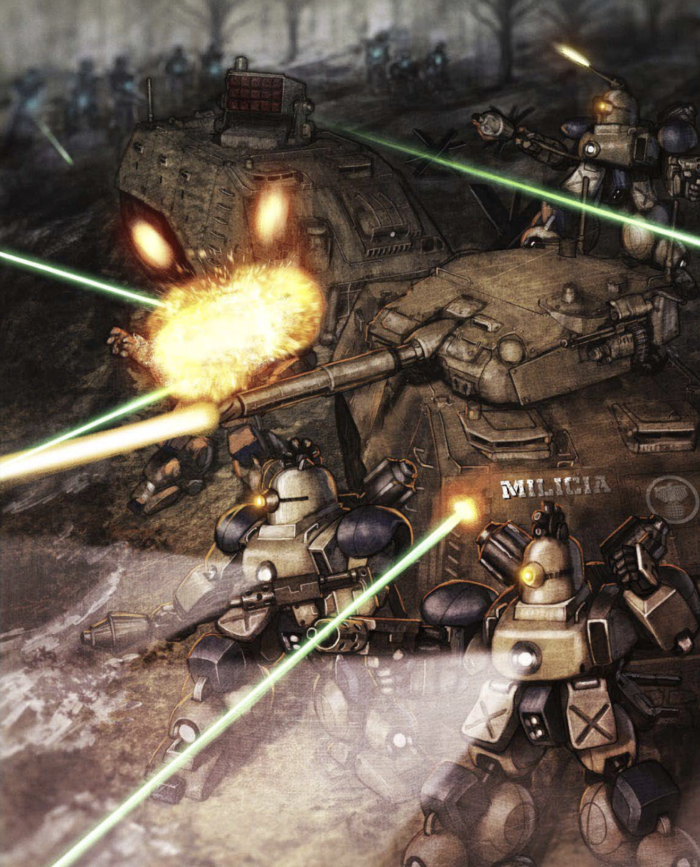
Laser Cannon (LC)
Range 12-36/72, Damage 6/7/8
A ‘sniper’ weapon with excellent range, Laser Cannons combine Advanced with Precise; these traits stack if the target is in optimal range. While damage is slightly low, this weapon’s extreme accuracy means it is a perfect choice for attacking Agile targets. Consider having a LC-equipped model Brace before attacking; 3d6 +2 Result Die is likely to hit nearly anything in the game.
Machine Gun (MG)
Range 3-9/18, Damage 3/4/5
Most commonly seen on gears and vehicles, the machine gun is a good choice for fighting infantry and cavalry. AI and Burst:2 can more than offset the Split penalty if you fire at two targets, or can be used against a single infantry to make even Agile infantry (such as En Koreshi) likely to be hit. They are also a reasonable choice against very lightly armored gears.
Pistol (P)
Range 0-12/24, Damage 6/7/8
Decent damage and Precise makes this suited for attacking lightly armored targets that have the Agile trait. Note the 0-12 range; Pistols can be used against adjacent targets at no penalty. While not a particularly exciting weapon on its own, two upgrades make them more interesting. The first is the Sidearms upgrade, which lets models grab an extra weapon; some models appreciate having a Pistol to cover gaps in their arsenal.
Duelists have an even better version, thanks to their Trick Shot upgrade. This gives them a LP with excellent range (0-24/48), the Link plus Split traits, and a special rule letting them ignore the normal penalties for Split attacks. While still unlikely to damage heavy armor, the Trick Shot upgrade lets Duelists out-move and out-shoot many other gears.
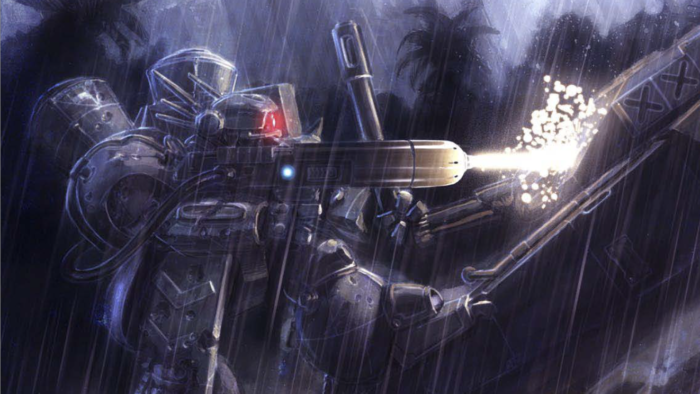
Particle Accelerator (PA)
Range 6-24/48, Damage 7/8/9
Often reserved for high-TV models, Particle Accelerators have decent damage, above-average range, and the Advanced trait makes them likely to hit their target. They also have the Haywire, which inflicts the Haywire status to the target (-1d6 on all Piloting, Gunnery, and Electronic Warfare rolls; this status is removed during the Cleanup phase) and has a 50-50 chance of doing 1 damage regardless of the target’s armor. A -1d6 penalty is very significant; it makes them less likely to hit you with their attacks, and bring their defense rolls down. A haywired target is thus vulnerable to attacks that rely on Margin of Success, such as Bazookas and Spike Guns.
Pulse Laser (PL)
Range 6-24/48, Damage 6/7/8, Burst:1, Advanced (OR) AP:2/3/4, Apex, Advanced
Another weapon that makes excellent use of ‘OR’ rules, the Pulse Laser has two firing modes. The first is basically a ‘super autocannon’ with more range. Combined with the high accuracy provided by Burst:1 plus Advanced, this mode can hit high-speed foes at ranges they may have trouble retaliating from. The second mode is less accurate, but its traits help defeat heavy armor. This makes the Pulse Laser an extremely effective weapon, and models carrying it tend to cost more TV as a result.
Panzerfaust (PZ)
Range 3-6/9, Damage 7/8/9
A sidegrade to the Hand Grenade, this has the same extremely low range. It does less damage and trades in all of its traits for a higher AP value, making panzerfausts a specialized weapon for attacking striders and tanks. Note that like the Hand Grenade, some models with Frag Cannons also pick up a Panzerfaust. If they do, that makes the model even more versatile. Trading a Panzerfaust out for a Hand Grenade is also possible via the Grenade Swap standard upgrade.
Rotary Cannon (RC)
Range 6-18/36, Damage 5/6/7
A sidegrade to the Autocannon, this weapon does less consistent damage in return for typically better accuracy thanks to its higher Burst value. This makes the Rotary Cannon reasonably likely to hit even outside its optimal range, and models with a 3+ Gunnery stat are especially likely to put the extra Burst to good use.
Rifle (RF)
Range 12-36/72, Damage 6/7/8
Depending on how you look at it, the Rifle is either a sidegrade or a less expensive downgrade to the Laser Cannon. They have identical range and damage, but the Rifle lacks the Advanced trait. This makes the Laser Cannon more accurate, and better in a straight-across comparison. However, not all models have access to both weapons.
Those that do sometimes make the player pay more TV for the Laser Cannon variant, or require a choice between a larger Rifle and a smaller (but more accurate) Laser Cannon. To get a practical example of how this works, have the LLC and HRF variants of the Jaguar take several shots at an Armor 8 target without Agile and an Armor 6 target that does have Agile. After a few dice rolls, the trade-offs should become apparent.
Railgun (RG)
Range 12-48/96, Damage 4/5/6
Cross-table range, Precise, Advanced, and a very high AP value make this a high-TV cost ‘sniper’ weapon. The base damage is low, so a Railgun relies on AP to hurt things. Consider inflicting Haywire on the target, or Focusing, or attacking the target’s rear arc to get a high enough Margin of Success. This can make a RG a very interesting weapon for fighting tanks and striders, though they are inherently accurate enough to fight Agile targets too.
Rotary Laser (RL)
Range 6-18/36, Damage 5/6/7
Basically an upgraded Rotary Cannon, a recent rules update gave this weapon both the Advanced and Burst: 2 traits. The RL is very likely to hit its target (or targets, plural, via the Split trait), and do so with a high enough Margin of Success to make up for its low damage. The Rotary Laser’s only serious flaw is that it struggles to damage heavily armored targets, but against most other foes it is one of the best weapons in the game. Most models carrying a Rotary Laser cost more TV than usual, so be ready to pay a little extra for the higher performance.
Snub Cannon (SC)
Range 3-9/18, Damage 8/9/10
A more extreme version of a bazooka, Snub Cannons have even less range in return for doing more damage and gaining the Demo:3 trait. Best used by high-speed models such as the Wildcat or the Jaguar, the SC is hard to hit with due to a lack of Burst or other accuracy-increasing traits. Nonetheless, whatever gets hit by a Snub Cannon will feel it!
Submachine Gun (SMG)
Range 0-9/18, Damage 5/6/7
Fairly common on recon gears and other lighter models, the Submachine Gun at first seems like a worse Frag Cannon; it has comparable range and damage, but a weaker trait list. However, a closer look reveals two small advantages. The first is a 0-9 optimal range, meaning it lacks the small gap of the Frag Cannon’s 3-9 optimal range. Second, the Submachine Gun is a valid choice for the Sidearms upgrade while the Frag Cannon is not. This means that if a model wants a weapon for hunting cavalry and lighter gears but does not already have one, adding a Submachine Gun via Sidearms might be their only option. This makes the Submachine Gun a niche weapon, but one that can be worth picking up in certain situations.
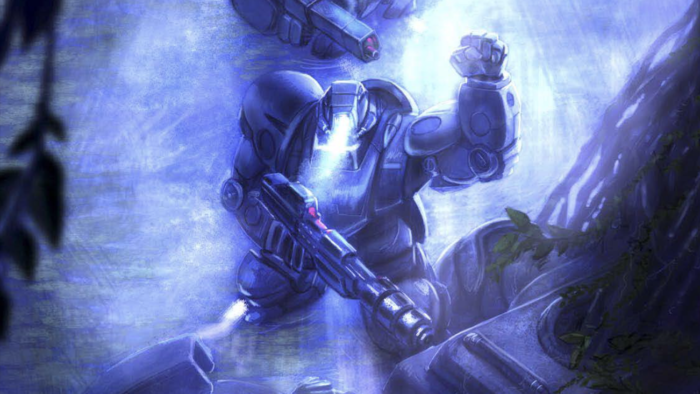
Tank Gun (TG)
Range 12-36/72, Damage 9/10/11
Very high damage and a long range makes this the definitive ‘big gun’ of the game. Combined with Demo:2 and a high AP value, Tank Guns are a prime choice for fighting tanks and striders. Though unlikely to hit faster targets, if they do then a TG will usually destroy non-infantry targets in one shot. Only other heavy tanks are likely to withstand a hit from a Tank Gun!
Final Thoughts
Heavy Gear Blitz! has a big weapon list, which is part of its fun but also part of the initial learning curve. Thankfully, using this guide to learn a few weapons at a time breaks it down into manageable chunks. Have fun setting up some models and rolling some dice to test each weapon out, and you’ll soon be familiar with every part of HGB!’s arsenal!

